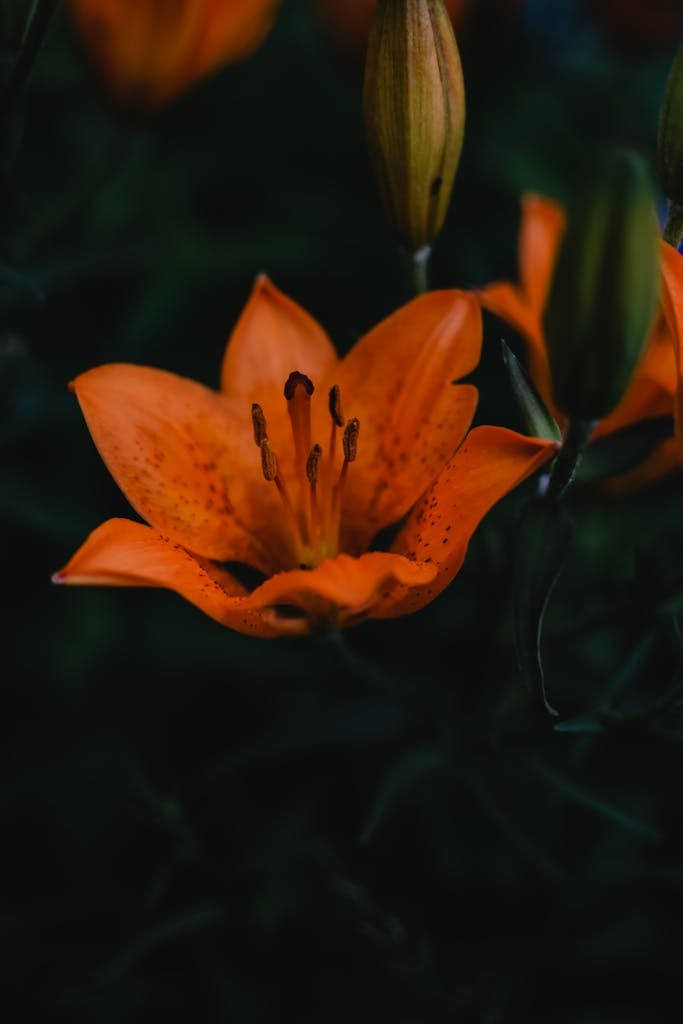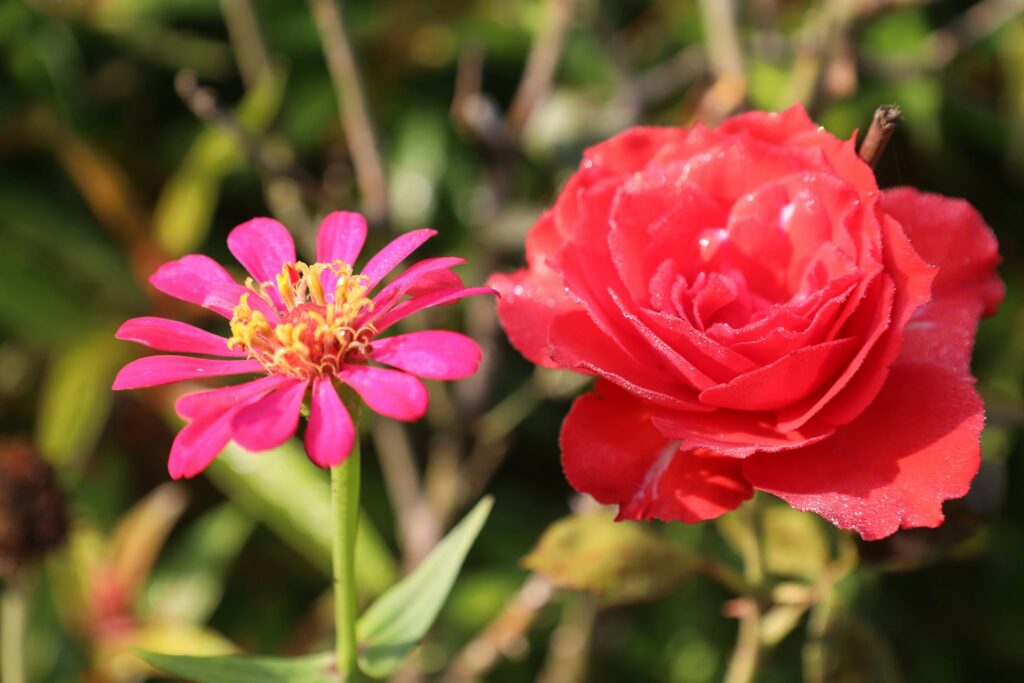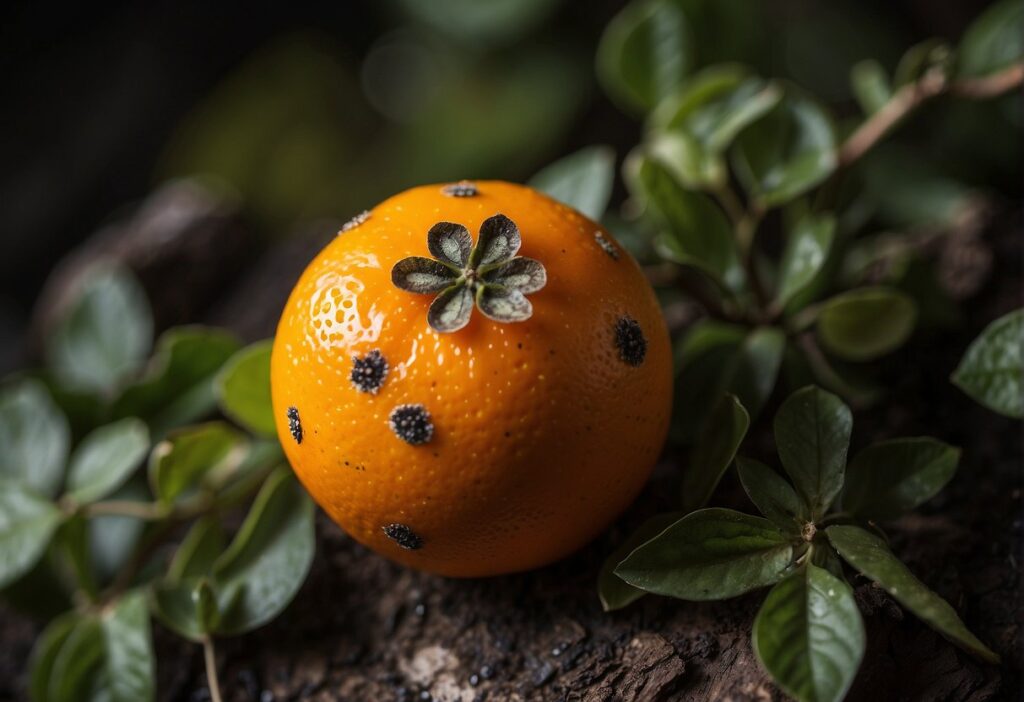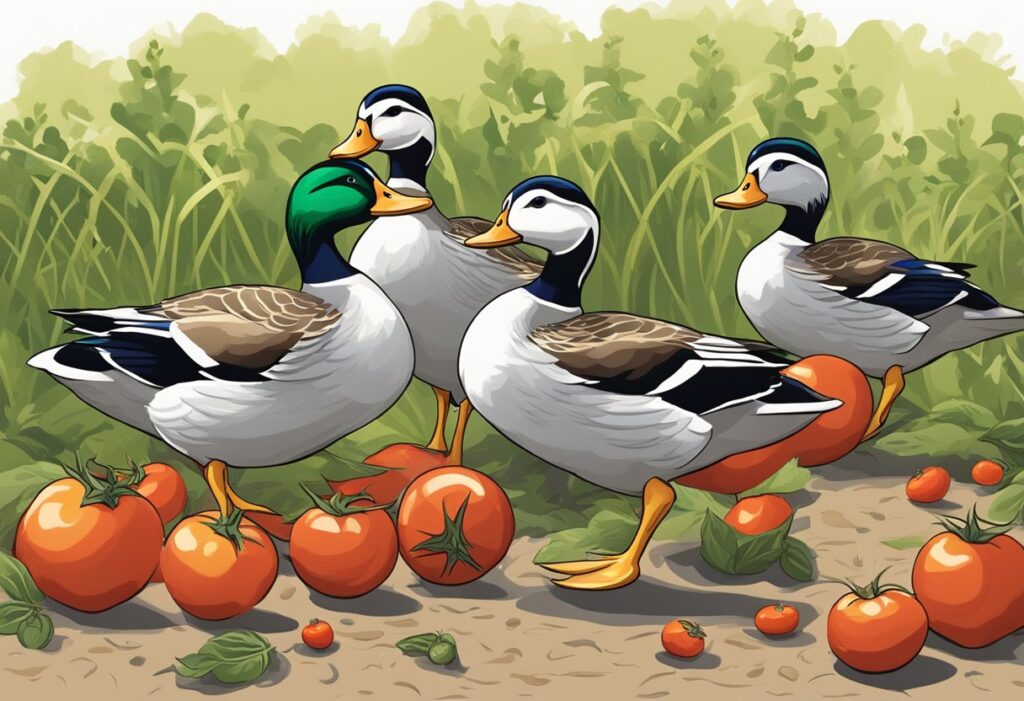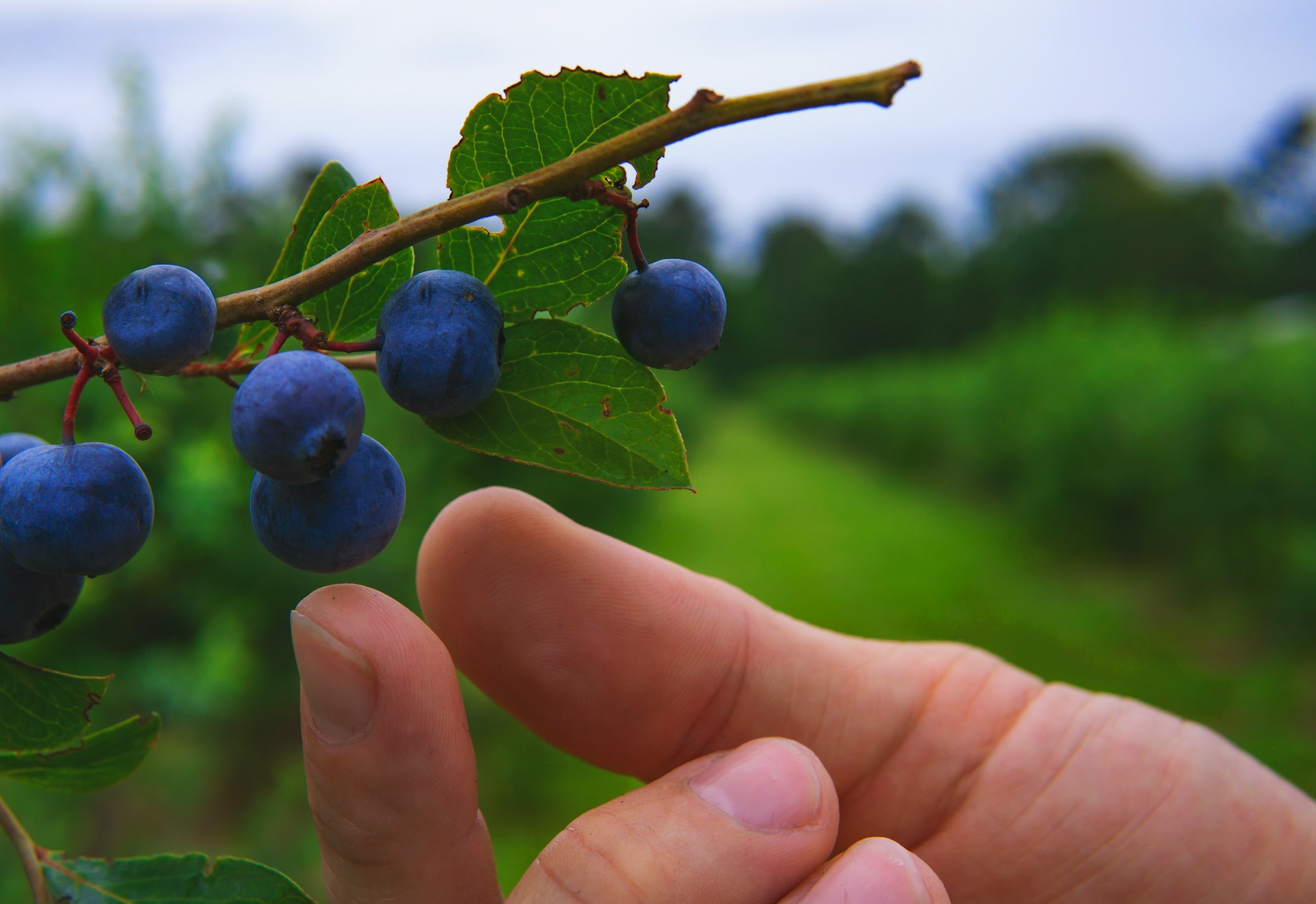
Welcome to the enchanting world of blueberries and their plant friends! In this extensive guide, we’re going to explore the ins and outs of blueberry companion planting. We’ll uncover the best plant pals for these delectable berries and explain why pairing them thoughtfully can lead to a healthier, more productive garden. Whether you’re a seasoned gardener or a curious newbie, this article is packed with valuable insights that will help you foster a vibrant blueberry patch. So, let’s dig in and discover how to make your blueberry bushes the happiest on the block.
1. What Makes a Plant a Good Companion for Blueberries?
Finding the perfect match for your blueberry plants is much like setting up a friend on a blind date; you want to pair them with someone who shares their interests and lifestyle. For blueberries, this means choosing companions that love acidic soil just as much as they do. The ideal pH range for these berries is between 4.5 and 5.5, and they appreciate well-draining soil that’s rich in organic matter. Good companion plants should have similar soil and sunlight requirements but not compete aggressively for these resources. They should also have a compatible growth habit and size to ensure that neither plant overshadows the other.
Plants that make good companions for blueberries often bring additional benefits such as attracting beneficial insects, repelling pests, or providing nutrients to the soil. For example, plants that attract pollinators can increase blueberry yields by ensuring better pollination. Similarly, some companion plants can act as trap crops, luring pests away from the blueberries, or they may simply repel pests with their natural aromas.
2. Why Should You Consider Companion Planting for Your Blueberry Bush?
Companion planting is a holistic approach to gardening that enhances the natural synergies between plants. By carefully selecting companions for your blueberry bushes, you can create a more diverse and resilient garden ecosystem. This diversity can lead to improved pollination and fruit set, as well as a reduction in the need for chemical inputs like pesticides and fertilizers.
Companion planting can also help you make the most of your garden space. By pairing plants with different heights, growth habits, and harvest times, you can maximize productivity. For instance, while blueberry bushes are still growing and not yet producing fruit, companion plants can fill in the gaps, providing interest and yield.
3. Which Plants Thrive Alongside Blueberries in Acidic Soil?
Acidic soil is a non-negotiable for blueberries, so it’s crucial to choose companions that not only tolerate but thrive in similar conditions. Plants like rhododendrons and azaleas are natural partners, as they also prefer a pH between 4.5 and 6.0. These shrubs can provide visual interest with their showy flowers and evergreen leaves, creating a stunning backdrop for your blueberry bushes.
Heather is another excellent choice for acidic soil. It offers a variety of colors and can bloom at different times of the year, depending on the species. The evergreen foliage of heather plants provides year-round interest, and their flowers are a magnet for pollinators, which can help increase blueberry yields.

4. How Can Companion Plants Protect Your Blueberry Bushes from Pests?
Companion plants can serve as a natural pest control method by either deterring pests with their scent or by attracting beneficial insects that prey on common blueberry pests. For instance, garlic has a strong aroma that can repel insects like aphids and beetles. Marigolds are known for their ability to repel nematodes and other pests with their vibrant flowers, and they can also introduce a splash of color to your garden.
Herbs like basil and mint can also be helpful in warding off unwanted insects. Basil emits a scent that many pests find unappealing, and it can also attract beneficial insects like ladybugs and bees. Mint should be planted with caution, as it can be invasive, but its strong scent is excellent for repelling ants and aphids. To keep mint from taking over, consider planting it in pots around your blueberry bushes.
5. What Are the Best Ground Cover Options for a Blueberry Garden?
Ground covers are a fantastic way to maintain an ideal growing environment for blueberries. They can help conserve soil moisture, prevent weed growth, and add beauty to your garden. Creeping thyme is one of the best ground cover options for blueberry gardens. It tolerates acidic soil, requires little water once established, and when it blooms, its flowers attract pollinators.
Sweet woodruff is another ground cover that performs well in acidic soil. Its star-shaped flowers and fragrant leaves can enhance the sensory appeal of your garden. Sweet woodruff spreads readily, creating a dense carpet that suppresses weeds and retains soil moisture.
6. Can Herbs Act as Beneficial Companions for Blueberries?
Indeed, many herbs can be excellent companions for blueberries. They often have similar cultural requirements and can provide a range of benefits. Thyme, for instance, is a low-growing herb that prefers well-drained soil and doesn’t need a lot of water, making it a suitable companion for blueberries. It also attracts pollinators when it flowers.
Oregano is another herb that thrives in slightly acidic soil, making it a good neighbor for blueberry bushes. Its strong aroma can help deter pests, and it can attract a host of beneficial insects. Plus, oregano is a perennial herb, so it will return year after year, providing a consistent companion for your blueberries.
7. What Are the Best Companion Plants for Different Blueberry Varieties?
When selecting companions for blueberries, it’s important to consider the specific variety of blueberry you’re growing. Highbush blueberries, for instance, can benefit from being paired with taller acid-loving perennials, such as ferns or huckleberries, which can provide a layered look in the garden. Lowbush varieties, on the other hand, are lower to the ground and may do well with ground covers like bearberry or low-growing herbs that won’t overshadow them.
For rabbiteye blueberries, which are more adaptable to heat and can handle slightly less acidic soil, you might consider pairing them with plants that can provide a bit of shade in hotter climates, such as taller herbs or small shrubs that can tolerate a bit of acidity themselves.
No matter the variety, make sure to match the growth habits and needs of your blueberry plants with those of potential companions to ensure they can coexist without one outcompeting the other.
8. Are There Any Plants to Avoid Planting Near Blueberries?
While many plants can be beneficial to blueberries, there are some that should be avoided. Vegetables, in general, are not ideal companions for blueberries because most vegetables prefer neutral to slightly alkaline soil, which is the opposite of what blueberries require.
Plants with deep or invasive root systems, such as trees and large shrubs, can also be problematic. They can compete with blueberries for water and nutrients, potentially stunting the growth of your berry bushes. Walnut trees, in particular, should be avoided as they release a chemical called juglone, which is toxic to many plants, including blueberries.
9. How Does Companion Planting with Blueberries Fit into Permaculture Practices?
Companion planting is a cornerstone of permaculture, a philosophy that aims to create sustainable and self-sufficient agricultural ecosystems. In permaculture, every plant has a role, and companion planting with blueberries is no exception. By pairing blueberries with the right plants, you can enhance soil health, increase biodiversity, and build a garden that supports itself.
For example, nitrogen-fixing plants like clover can be interplanted with blueberries to naturally enrich the soil. Flowering companions can attract pollinators and predatory insects that help keep pest populations in check. Ground covers can act as living mulch, conserving water and preventing erosion.
10. What Are Some Tips for Planting Blueberries in Pots with Companions?
Growing blueberries in pots with companion plants requires careful consideration of the needs of each plant. Choose companions with similar container requirements, such as herbs or smaller perennials that won’t outgrow the pot. The pot should be large enough to accommodate both the blueberry bush and its companions, providing adequate space for roots to spread.
It’s also essential to ensure that both plants receive enough sunlight and are potted in an acidic soil mix appropriate for blueberries. Regular pruning and monitoring of the companion plants will help maintain balance in the container, preventing one plant from dominating the other.
When watering potted blueberries and their companions, be mindful of the moisture needs of each plant. While blueberries like consistently moist soil, they do not tolerate waterlogged conditions, so good drainage is critical. Companion plants chosen for containers should have similar water requirements to maintain harmony in the pot.
11. How to Choose the Right Companion Plants for Blueberry Care?
When selecting companion plants for your blueberries, consider the care requirements of each potential companion. Look for plants that require similar amounts of water, sunlight, and soil acidity. It’s also important to consider the mature size of each plant to avoid overcrowding and competition for resources.
The timing of care activities should also be harmonious. For instance, if one plant requires heavy pruning at a time when the blueberry bush is bearing fruit, it may not be the best companion due to the risk of disturbing the blueberry’s growth or harvest.
12. Understanding the Relationships Between Plants in a Blueberry Patch
The relationships between plants in a blueberry patch are complex and interdependent. Companion plants can influence the growth and health of blueberries in various ways, from improving soil structure and fertility to modifying microclimates and deterring pests.
Observing the interactions between your blueberry bushes and their companions over time will allow you to adjust your planting strategy to better support the needs of your blueberries. This could mean introducing new companions, changing the layout of your garden, or even removing plants that are not beneficial.
13. The Role of Pollinators in Companion Planting for Blueberries
Pollinators are vital to the success of blueberry bushes, as they are necessary for the pollination of flowers and the subsequent fruit set. Companion plants that attract pollinators, such as borage, lavender, and bee balm, can significantly enhance blueberry production.
By providing a habitat for pollinators with a diverse selection of flowering plants, you create an environment where these beneficial insects can thrive and move freely between the blueberry flowers and companion plant blooms, ensuring effective pollination.
14. Watering Practices for Companion Plants and Blueberries
Watering practices for blueberries and their companions should be consistent and appropriate for the needs of acid-loving plants. Overhead watering can lead to fungal diseases, so it’s better to use soaker hoses or drip irrigation to deliver water directly to the root zone, minimizing moisture on foliage. Mulching around the base of the plants can help retain soil moisture and reduce the frequency of watering.
It’s essential to monitor the moisture levels of both blueberries and their companions, as overwatering can be just as detrimental as underwatering. Blueberries prefer soil that is moist but well-drained. Companion plants should have similar moisture requirements to ensure that one does not suffer at the expense of the other’s watering needs.
15. Fertilizing Your Blueberry Companions: Best Practices
Fertilizing companion plants in a blueberry garden should be done with care to avoid disturbing the acidic soil balance that blueberries require. Organic fertilizers that are suitable for acid-loving plants are ideal. These can include cottonseed meal, fish emulsion, or specially formulated fertilizers for acid-loving plants.
When fertilizing, apply the nutrients at the drip line of the plants rather than directly at the base to encourage root growth outward and prevent root burn. It is also important to follow the recommended application rates and frequency to avoid over-fertilization, which can harm both blueberries and their companions.
In conclusion, companion planting with blueberries can lead to a more productive and healthier garden. By selecting the right companions, you can create a symbiotic environment where plants support each other’s growth. Remember to choose plants with similar cultural requirements and to consider the overall design and timing of your garden’s needs. With these practices in place, you can enjoy a thriving blueberry patch and a beautiful, diverse garden ecosystem for years to come.

